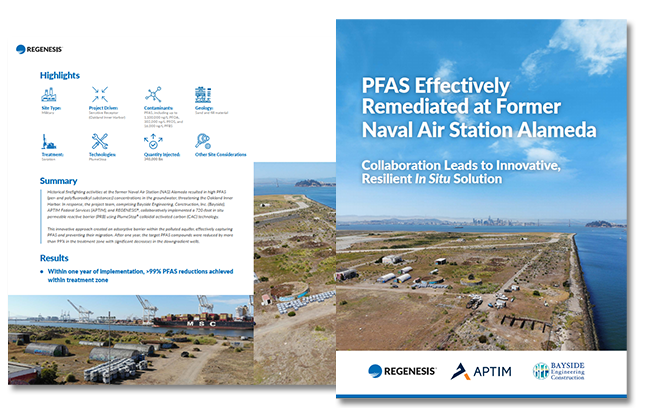PFAS Effectively Remediated at Former Naval Air Station Alameda
Background
Historical firefighting activities at the former Naval Air Station (NAS) Alameda resulted in high PFAS (per- and polyfluoroalkyl substances) concentrations in the groundwater, threatening the Oakland Inner Harbor. In response, the project team, comprising Bayside Engineering, Construction, Inc. (Bayside), APTIM Federal Services (APTIM), and REGENESIS®, collaboratively implemented a 720-foot in situ permeable reactive barrier (PRB) using PlumeStop® colloidal activated carbon (CAC) technology. The site, designated as Installation Restoration (IR) Site 14, was formerly used for firefighter training activities at NAS Alameda. Historical use of PFAS-containing fire suppression foam resulted in significant groundwater contamination into the First Water Bearing Zone composed of sand and artificial fill approximately 1 to 8 feet below the ground surface. Initial testing revealed contamination levels of PFOA (1,100,000 ng/L), PFOS (302,000 ng/L), and PFBS (16,000 ng/L), threatening the adjacent Oakland Inner Harbor and a proposed shoreline park. These findings prompted the U.S. Navy to conduct a remedial investigation (RI) for PFAS from 2021 to 2022. Based on the RI, a design verification study and pilot test were initiated to evaluate a PlumeStop CAC barrier as a mitigation strategy to minimize the flow of PFAS-impacted groundwater into the harbor.

 Americas
Americas Europe
Europe Français
Français Deutsch
Deutsch Italiano
Italiano Español
Español




